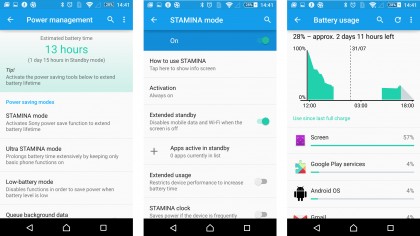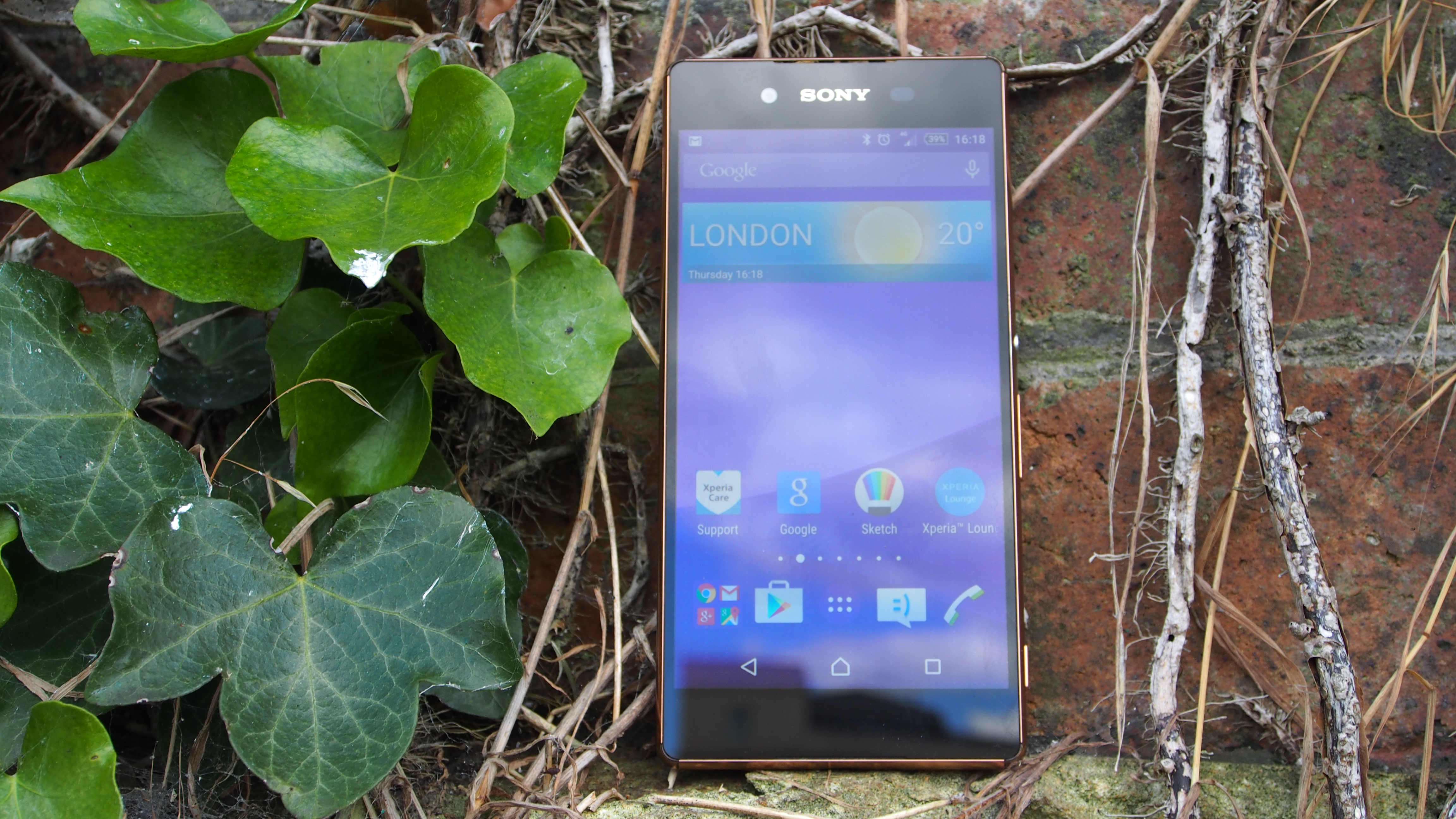Why you can trust TechRadar
When we got the specs of the Xperia Z3+, one major thing stood out: while pretty much every other aspect of the smartphone either got a spec boost (or stayed the same), the battery of the Z3+ actually got smaller.
You read that right; while the Z3 comes with a 3100 mAh battery, the Z3+ comes with a lower capacity 2930mAh power pack.
The reason for this is because Sony has trimmed the dimensions of the Z3+, so we get a slimmer and lighter handset that could potentially not last as long between charges as its predecessor.
A smaller capacity battery doesn't always mean shorter battery life, and Sony could have made some software and hardware tweaks to make the new handset more efficient, negating any negative impact brought on by the reduction in battery size.
For example, the Xperia Z3+ uses the Snapdragon 810 chipset to power the device. Qualcomm, the company behind the hardware, has worked hard on making the Snapdragon 810 faster while using less energy (and therefore burning through the battery slower) than the older Snapdragon 801 – which is what the Xperia Z3 uses.
With that in mind, I was keen to see how well the Z3+ would work when out and about. On an average day, with only light internet browsing, listening to a few songs, sending a few texts and making short phone calls, the Z3+ would reach 10pm with about 50% of its battery remaining.
This isn't bad, and if you don't plug in the Xperia Z3 to charge overnight, you'd probably get another half a day.
During a more intensive day, the battery life dropped sharply. This included heavy internet use, replying to numerous emails and text messages, writing notes and listening to music. With heavy use (which wouldn't be out of the question for many people), the battery ended up at 14% by 6:30PM.
Web browsing was the biggest battery guzzler here, with the battery dropping by almost 1% per minute of browsing. Image, video and GIF-heavy sites were particularly taxing, with the handset heating up noticeably when browsing.
In TechRadar's battery benchmark test, where we looped a high definition video on full brightness for 90 minutes, the battery dropped by 38% from full to just 62%. This is quite a substantial drop, with the Z3 dropping 31%. In our Z3 review, we blamed this large drop in battery to the overly bright screen, as the Z3 and Z3+ get a lot brighter than other handsets.

There's no denying that the battery life here is a disappointment, and if you want to use the Z3+ for watching videos and browsing the internet, then I recommend reconsidering – or at least investing in a portable battery pack.
As with previous Xperia handsets, Sony has included a number of battery saving modes which can eke out extra battery life, and on the whole these are easy to turn on, and do a decent job of prolonging the time between charges.
Unlike the battery saving mode on stock Android, the impact to performance isn't as noticeable either, as some power saving modes deliberately make the phone run slower to save energy.
While the depth and breadth of battery saving options is welcome, it doesn't quite make up for the relatively poor battery life of the Z3+.

Matt is TechRadar's Managing Editor for Core Tech, looking after computing and mobile technology. Having written for a number of publications such as PC Plus, PC Format, T3 and Linux Format, there's no aspect of technology that Matt isn't passionate about, especially computing and PC gaming. He’s personally reviewed and used most of the laptops in our best laptops guide - and since joining TechRadar in 2014, he's reviewed over 250 laptops and computing accessories personally.
